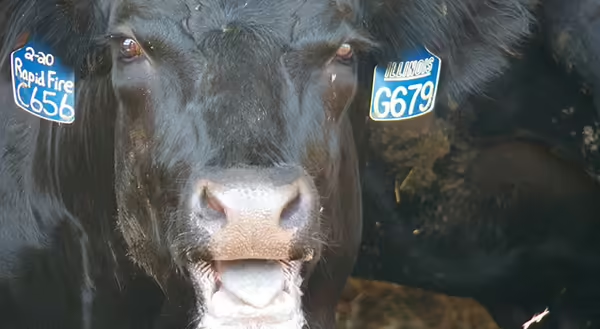
Heat stress is a multifaceted issue that poses significant challenges to beef cattle producers, impacting animal welfare, health, and profitability. Understanding the complexities of heat stress and implementing advanced mitigation strategies becomes crucial.
Causes of Heat Stress in Beef Cattle
Temperature and Humidity: Cattle are more sensitive to temperature and humidity than other livestock species. When the temperature-humidity index surpasses the threshold of 72, cattle begin to experience heat stress. The tiers of when the temperature is at the most risk are, Moderate Risk: 72-79°F, High Risk: 80-89°F, and, Very High Risk: 90°F and above. Temperature-humidity index takes into account both temperature and humidity levels to gauge the severity of heat stress.
Heat Load: Heat load in cattle refers to the amount of heat they need to release from their bodies to maintain a comfortable temperature. Cattle are sensitive to heat stress as they have limited ability to sweat. The heat load on cattle increases during extreme weather conditions, especially during summer months when solar radiation amplifies heat absorption. Providing shade, proper ventilation, and access to cool water can help reduce heat stress in cattle.
Black-Hided Cattle: Cattle with dark coats, such as Angus, Simmental, or Black blady Hereford can absorb more solar radiation, exacerbating heat stress.
Thermal Radiation: Cattle housed in open pastures with limited shade or access to water experience thermal radiation from the ground and surrounding surfaces, contributing to elevated body temperatures.
High Stocking Density: Stocking density is the number of animals on a part of the pasture for a certain portion of time. High stocking density in drylots or feeding barns is appropriate. As barns become more crowded, they result in increased heat production, limiting individual space for cattle to find cooler areas. Barns that have a poorly designed ventilated system can also be a contributing factor as well as cattle that are at heavier weights, may encounter a more difficult time handling heat stress.
Impacts of Heat Stress on Beef Cattle
Due to the warm temperature and dry weather a number of impacts can occur to beef cattle.
- Heat-stressed cattle reduce feed consumption due to metabolic changes and discomfort, leading to weight loss and decreased production efficiency.
- Heat stress negatively affects the reproductive system in both males and females, resulting in reduced fertility rates, embryonic loss, and irregular estrus cycles.
- Heat exhaustion and heatstroke are severe consequences of heat stress, causing dehydration, lethargy, and, in extreme cases, death.
- Elevated temperatures negatively impact rumen fermentation, leading to lower microbial activity and reduced nutrient absorption.
- Heat-stressed cattle experience suppressed immune function, making them more susceptible to infectious diseases and decreasing their ability to fight off illnesses.
Advanced Mitigation Strategies
Evaporative Cooling Systems: Install misters or sprinklers in barns and feedlots to cool the air, providing relief to heat-stressed cattle.
Shade and Shelter: Design and strategically place shade structures and shelters to allow easy access for cattle and promote their use during peak heat hours.
Water Management: Offering plenty of clean and fresh water is extremely important. Implement water management strategies, such as adding electrolytes to drinking water, to encourage increased water consumption during heat stress.
Nutritional Adjustments: Formulate diets with easily digestible feeds and balanced nutrients, considering the specific nutritional requirements of heat-stressed cattle.
Heat stress in beef cattle is a multifaceted issue that demands proactive and innovative solutions. By comprehensively understanding the causes and impacts of heat stress and employing advanced mitigation strategies, beef cattle producers can create a more resilient and productive environment for their animals. Sustaining the well-being of beef cattle under challenging weather conditions not only promotes animal welfare but also supports the long-term sustainability and success of cattle operations.